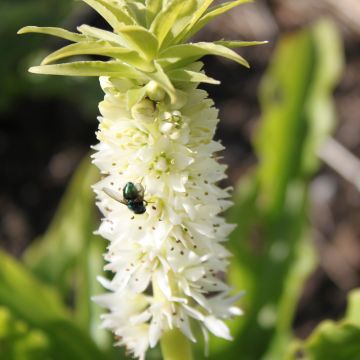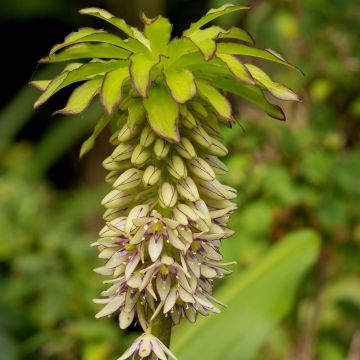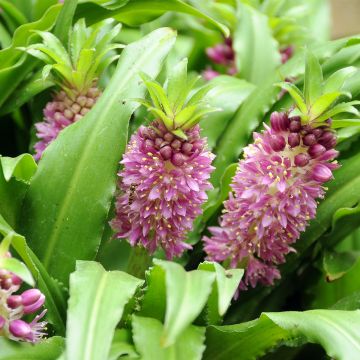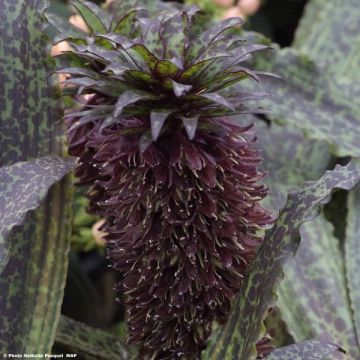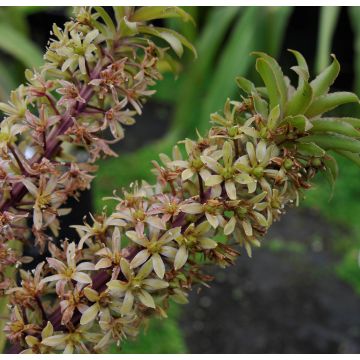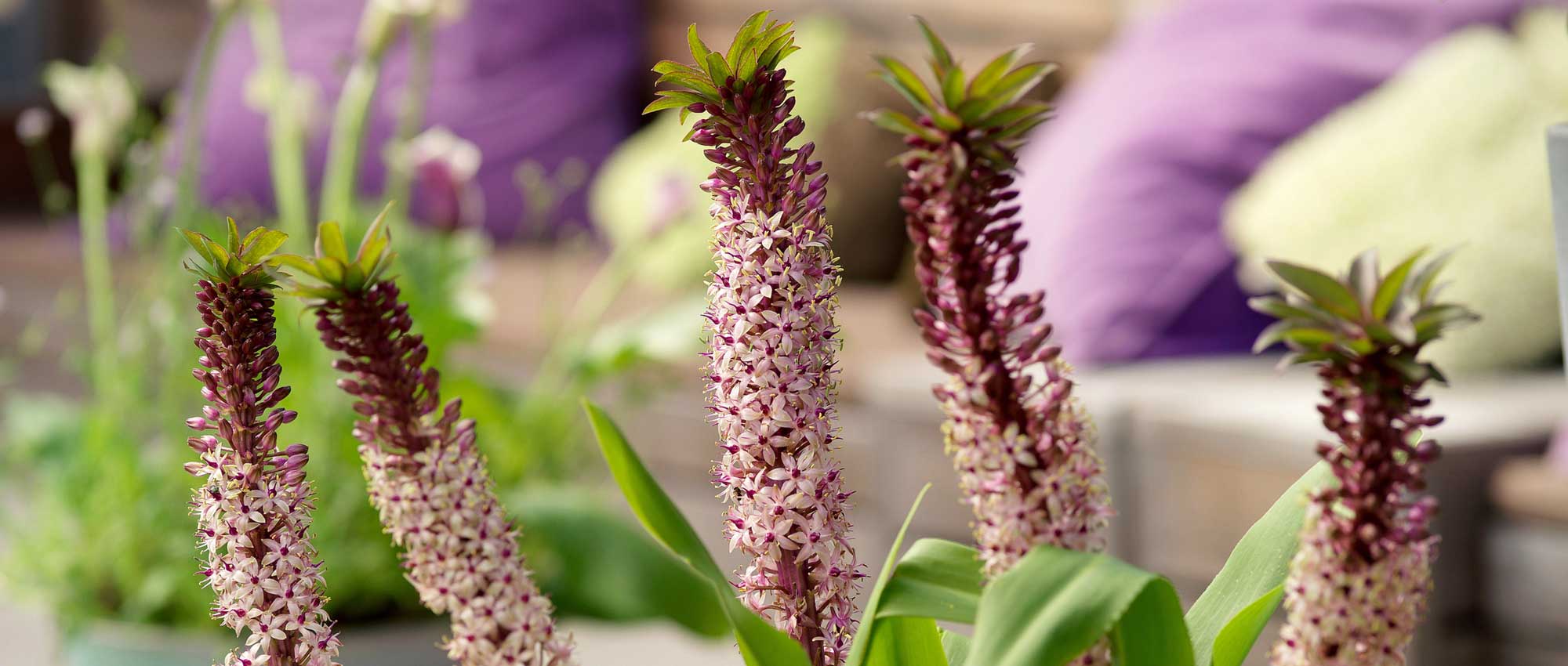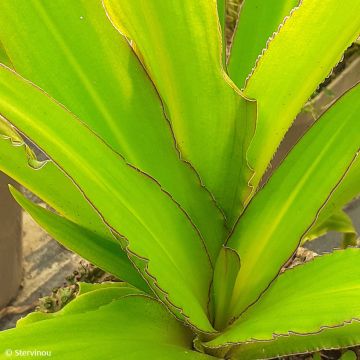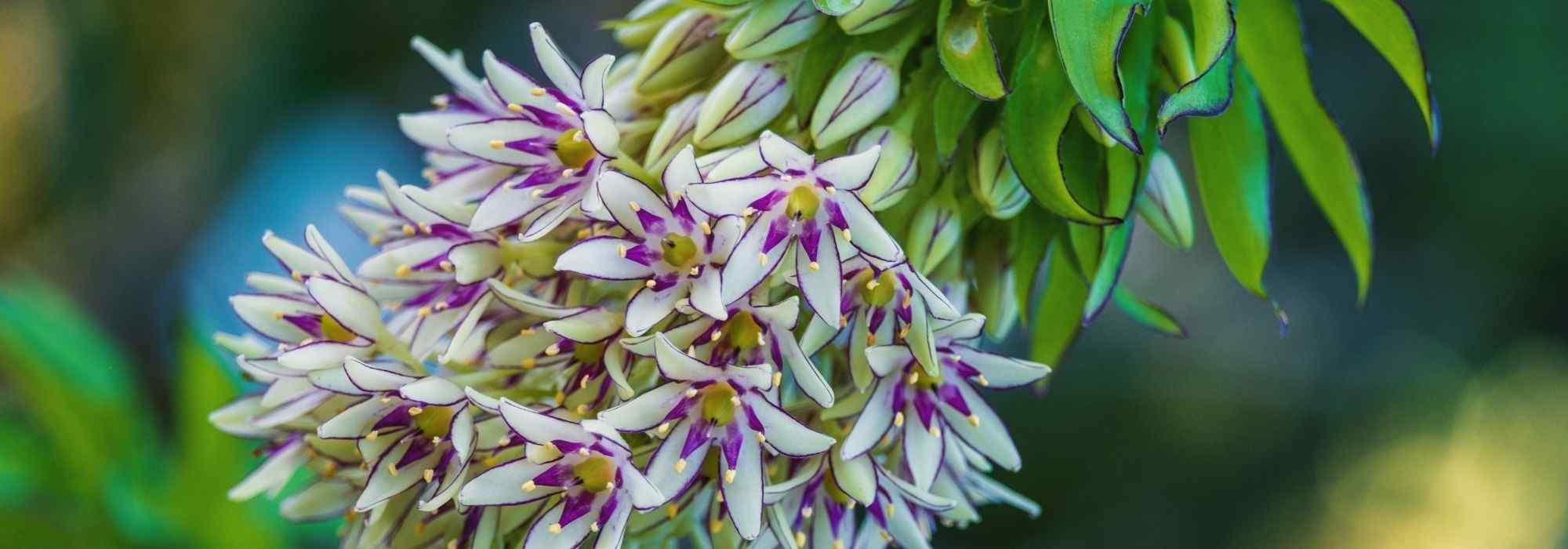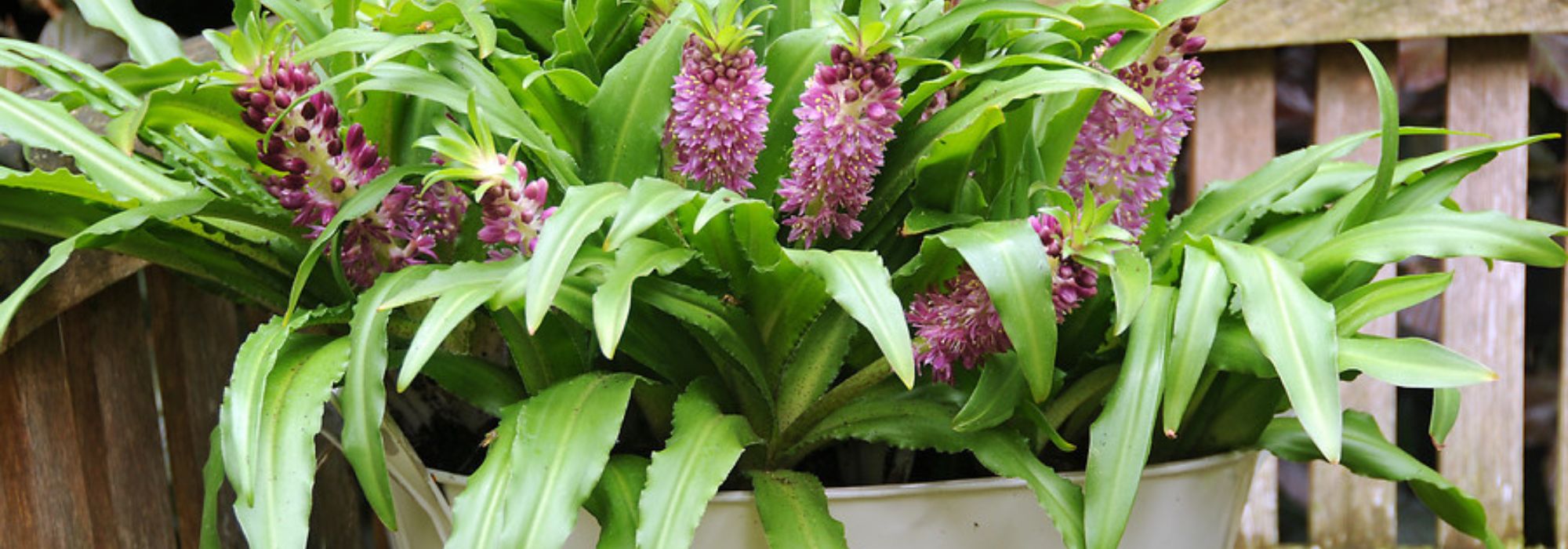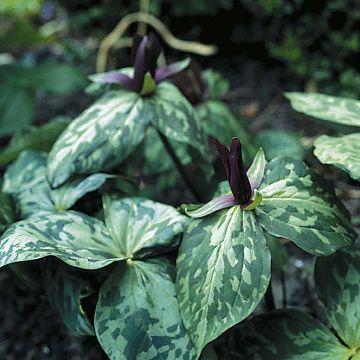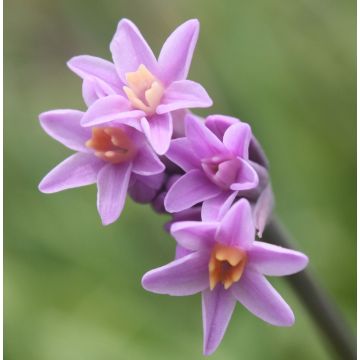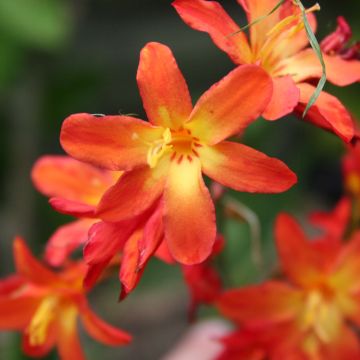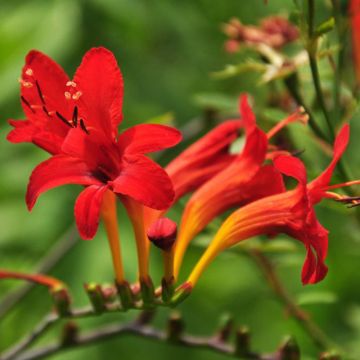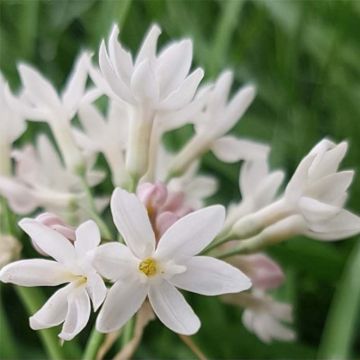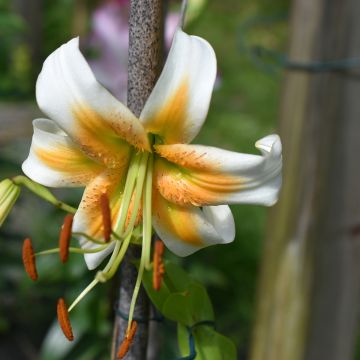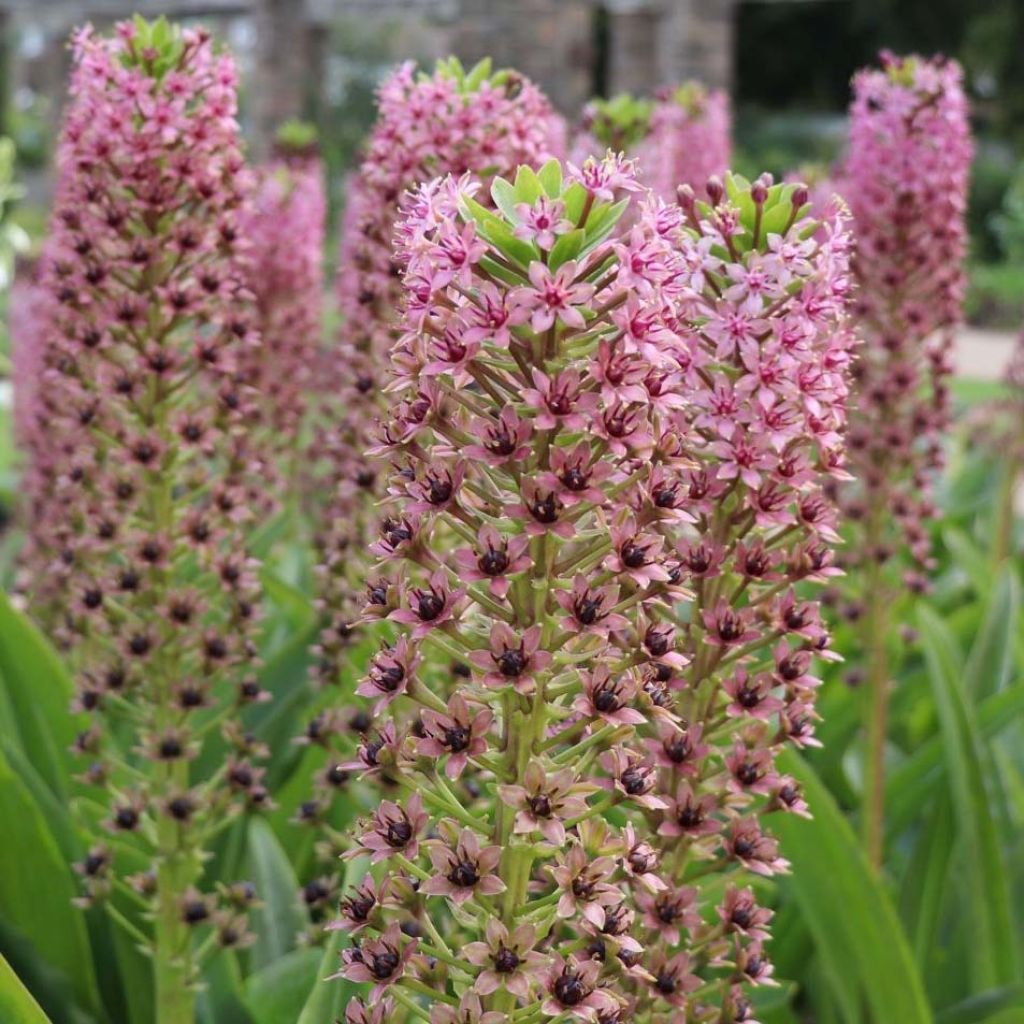

Eucomis comosa Pink Gin - Pineapple flower
Eucomis comosa Pink Gin - Pineapple flower
Eucomis comosa Pink Gin
Pineapple flower, Pineapple lily
Special offer!
Receive a €20 voucher for any order over €90 (excluding delivery costs, credit notes, and plastic-free options)!
1- Add your favorite plants to your cart.
2- Once you have reached €90, confirm your order (you can even choose the delivery date!).
3- As soon as your order is shipped, you will receive an email containing your voucher code, valid for 3 months (90 days).
Your voucher is unique and can only be used once, for any order with a minimum value of €20, excluding delivery costs.
Can be combined with other current offers, non-divisible and non-refundable.
Why not try an alternative variety in stock?
View all →This plant carries a 6 months recovery warranty
More information
We guarantee the quality of our plants for a full growing cycle, and will replace at our expense any plant that fails to recover under normal climatic and planting conditions.
Would this plant suit my garden?
Set up your Plantfit profile →
Description
Eucomis 'Pink Gin' is a variety of pineapple lily that stands out with its beautiful pink flowering in late summer, which is absolutely stunning under the low September light. This South African bulbous plant is easy to grow in the ground in mild regions. It is also perfect for pots on a patio or balcony. Inflorescences filled with purple floral buds and then small pink flowers emerge from a rosette of large leaves. They are topped with a tuft of leaves and are followed by decorative seeds.
Eucomis 'Pink Gin' belongs to the Asparagaceae family. It is a horticultural selection derived from E. comosa, native to southern Africa. It is a perennial herbaceous plant with deciduous foliage in winter, developing from a large swollen bulb. Within 4 to 5 years, it forms a clump that reaches 1.2m (4ft) in height when flowering, and occupies about 60cm (24in) in width on the ground. In spring, its vibrant green foliage emerges in a voluminous rosette of shiny leaves. Initially small in size, they grow and expand until flowering. They are thick, long, and linear, arranged in a crown around a central axis. In August-September, it reveals a floral stem covered with purple floral buds that open into pink stars, from bottom to top. The floral spike is topped with a small bouquet of leaves, similar to the one found at the top of a pineapple. The flowering is followed by the formation of decorative pods. This plant produces bulblets around the mother bulb, which helps the clump to slowly expand over time. Its vegetation disappears in winter.
Plant Eucomis 'Pink Gin' in a rockery or in a well-drained bed, alongside kniphofias, agapanthus, libertias, and Gladiolus callianthus, for example. On its own, it creates superb borders near pathways. Hardy down to -8°C (17.6°F), Eucomis 'Pink Gin' grows in full sun or partial shade in any well-drained, rich, and moist soil. It is also easy to grow in pots (which allows for overwintering), and its long-lasting flowers make beautiful exotic bouquets.
Eucomis comosa Pink Gin - Pineapple flower in pictures
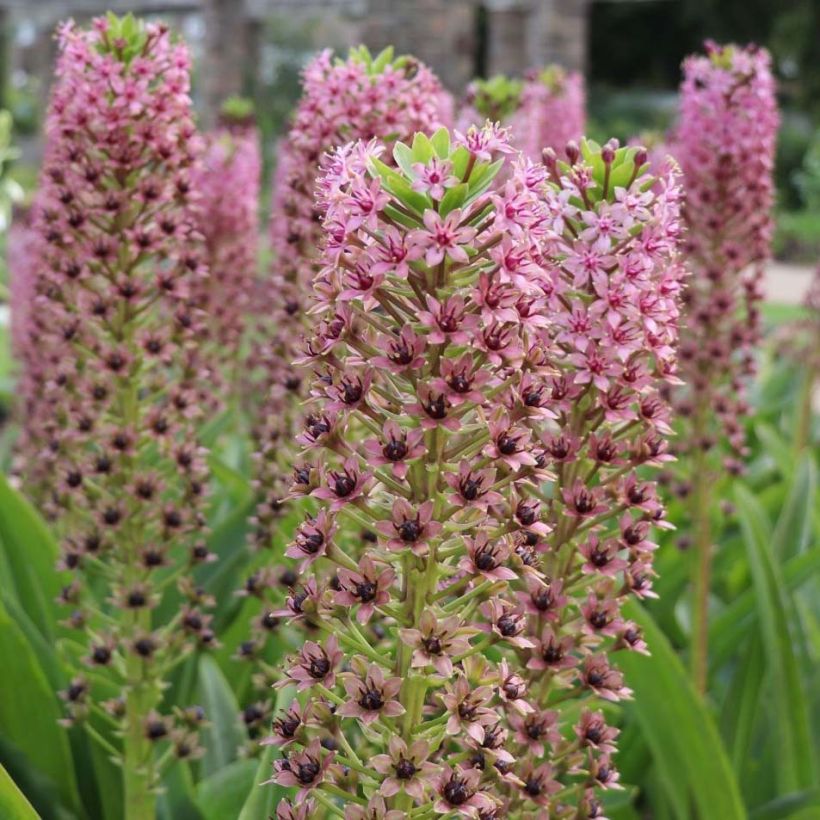

Plant habit
Flowering
Foliage
Botanical data
Eucomis
comosa
Pink Gin
Hyacinthaceae (Liliaceae)
Pineapple flower, Pineapple lily
South Africa
Other Eucomis
View all →Planting and care
Plant the bulbs in spring. Dig a hole about 40 to 50 cm (16 to 20in) in all directions, and place a layer of gravel at the bottom for good drainage. Fill with a mixture of garden soil, compost, and sand. In heavy soil, plant the bulb in pure sand. Plant at a depth of 15 to 20cm (6 to 8in) in well-drained soil, spaced 30cm (12in) apart, with the tapered part of the bulb facing upwards. The plant is hardy to -8°C (17.6°F), in well-drained soil that is not waterlogged in winter and under a thick layer of dead leaves or straw. In areas with harsh winters, mulch the clumps and protect them with tarpaulin or a roof tile. This plant tolerates partial shade well, but prefers a sunny exposure that promotes flowering.
It is also easy to grow in a container: 1 bulb per 18cm (7in) diameter pot
Planting period
Intended location
Care
Planting & care advice
This item has not been reviewed yet - be the first to leave a review about it.
Similar products
Haven't found what you were looking for?
Hardiness is the lowest winter temperature a plant can endure without suffering serious damage or even dying. However, hardiness is affected by location (a sheltered area, such as a patio), protection (winter cover) and soil type (hardiness is improved by well-drained soil).

Photo Sharing Terms & Conditions
In order to encourage gardeners to interact and share their experiences, Promesse de fleurs offers various media enabling content to be uploaded onto its Site - in particular via the ‘Photo sharing’ module.
The User agrees to refrain from:
- Posting any content that is illegal, prejudicial, insulting, racist, inciteful to hatred, revisionist, contrary to public decency, that infringes on privacy or on the privacy rights of third parties, in particular the publicity rights of persons and goods, intellectual property rights, or the right to privacy.
- Submitting content on behalf of a third party;
- Impersonate the identity of a third party and/or publish any personal information about a third party;
In general, the User undertakes to refrain from any unethical behaviour.
All Content (in particular text, comments, files, images, photos, videos, creative works, etc.), which may be subject to property or intellectual property rights, image or other private rights, shall remain the property of the User, subject to the limited rights granted by the terms of the licence granted by Promesse de fleurs as stated below. Users are at liberty to publish or not to publish such Content on the Site, notably via the ‘Photo Sharing’ facility, and accept that this Content shall be made public and freely accessible, notably on the Internet.
Users further acknowledge, undertake to have ,and guarantee that they hold all necessary rights and permissions to publish such material on the Site, in particular with regard to the legislation in force pertaining to any privacy, property, intellectual property, image, or contractual rights, or rights of any other nature. By publishing such Content on the Site, Users acknowledge accepting full liability as publishers of the Content within the meaning of the law, and grant Promesse de fleurs, free of charge, an inclusive, worldwide licence for the said Content for the entire duration of its publication, including all reproduction, representation, up/downloading, displaying, performing, transmission, and storage rights.
Users also grant permission for their name to be linked to the Content and accept that this link may not always be made available.
By engaging in posting material, Users consent to their Content becoming automatically accessible on the Internet, in particular on other sites and/or blogs and/or web pages of the Promesse de fleurs site, including in particular social pages and the Promesse de fleurs catalogue.
Users may secure the removal of entrusted content free of charge by issuing a simple request via our contact form.
The flowering period indicated on our website applies to countries and regions located in USDA zone 8 (France, the United Kingdom, Ireland, the Netherlands, etc.)
It will vary according to where you live:
- In zones 9 to 10 (Italy, Spain, Greece, etc.), flowering will occur about 2 to 4 weeks earlier.
- In zones 6 to 7 (Germany, Poland, Slovenia, and lower mountainous regions), flowering will be delayed by 2 to 3 weeks.
- In zone 5 (Central Europe, Scandinavia), blooming will be delayed by 3 to 5 weeks.
In temperate climates, pruning of spring-flowering shrubs (forsythia, spireas, etc.) should be done just after flowering.
Pruning of summer-flowering shrubs (Indian Lilac, Perovskia, etc.) can be done in winter or spring.
In cold regions as well as with frost-sensitive plants, avoid pruning too early when severe frosts may still occur.
The planting period indicated on our website applies to countries and regions located in USDA zone 8 (France, United Kingdom, Ireland, Netherlands).
It will vary according to where you live:
- In Mediterranean zones (Marseille, Madrid, Milan, etc.), autumn and winter are the best planting periods.
- In continental zones (Strasbourg, Munich, Vienna, etc.), delay planting by 2 to 3 weeks in spring and bring it forward by 2 to 4 weeks in autumn.
- In mountainous regions (the Alps, Pyrenees, Carpathians, etc.), it is best to plant in late spring (May-June) or late summer (August-September).
The harvesting period indicated on our website applies to countries and regions in USDA zone 8 (France, England, Ireland, the Netherlands).
In colder areas (Scandinavia, Poland, Austria...) fruit and vegetable harvests are likely to be delayed by 3-4 weeks.
In warmer areas (Italy, Spain, Greece, etc.), harvesting will probably take place earlier, depending on weather conditions.
The sowing periods indicated on our website apply to countries and regions within USDA Zone 8 (France, UK, Ireland, Netherlands).
In colder areas (Scandinavia, Poland, Austria...), delay any outdoor sowing by 3-4 weeks, or sow under glass.
In warmer climes (Italy, Spain, Greece, etc.), bring outdoor sowing forward by a few weeks.






























